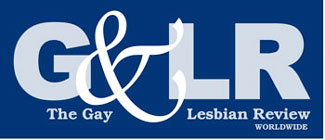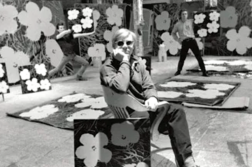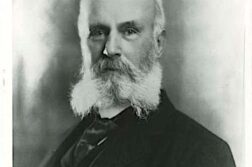WHEN SPAIN became the third country in the world to grant same-sex couples the freedom to marry in 2005, it came as a surprise to many watching from the United States. How could a traditional, Catholic country that had been under a fascist dictatorship for most of the 20th century suddenly be at the forefront of marriage equality for same-sex couples?
Spanish GLBT rights activists describe the change in dramatic terms: Spain emerged from the catacombs of oppression to become one of the most progressive states in the world. During the 20th century, Spain, like most Western countries, experienced a paradigm shift separating sexual orientation from gender. By the 1960’s, Spanish society had adopted the distinction between “homosexual or heterosexual.”
Still, the political, social, and legal landscape for gays and lesbians in Spain in the 1960’s and 70’s was considerably more oppressive than in the U.S. or other Western European countries. Same-sex sexual conduct was prohibited by law under the 1954 Ley de vagos y maleantes, which declared homosexuals as dangerous to society. The Ley de peligrosidad y rehabilitación social, or Law of Social Danger and Rehabilitation (LPRS), enacted in 1970, authorized the imprisonment of homosexuals. In the 1970’s alone, over a thousand men were incarcerated in specialized facilities for the “rehabilitation” of such criminals. Women were not generally incarcerated but rather brought to their husbands or families for punishment or psychiatric treatment. Public sentiment also condemned homosexual conduct. According to a poll conducted in 1975, a majority of Spaniards wanted to “make homosexuality disappear” (Platero, 2007).
Gay male activism began in the early 1970’s with the Movimiento Español de Liberación Homosexual (MELH) or Spanish Movement for Homosexual Liberation, but it was only after the death of Franco in 1975 that the gay liberation movement became visible to the public. The first gay pride parade in Spain took place in Barcelona in 1977 and more than 5,000 people participated, despite severe police repression that included firing rubber bullets into the crowd.
The pendulum swung from totalitarian dictatorship to liberation on all fronts in the late 70’s and early 80’s, as Spain threw off the Francoist-Catholic dogma that had ruled daily life for almost forty years. The Constitution of 1978 declared that “Spaniards are equal under the law, without any regard or discrimination for birthplace, race, sex, religion, opinion or any other condition or circumstance personal or social.” The explicit ban on homosexual conduct in LPRS was repealed in 1979.
This period was marked by the legalization of abortion, contraception, and divorce in the mid-1980’s, as well as the final repeal of laws used to persecute gays under a prohibition of “public scandal” in 1988. Organizations based on sexual orientation were legalized in 1982. More extreme social changes included La Movida, a national countercultural movement challenging many social taboos. With iconic members such as film director Pedro Almódovar leading the charge, tolerance of sexual minorities became part of being “radical” or “modern,” and Spanish citizens, particularly the young, incorporated sexuality and gender identity into the transgressive cultural movement. Gema Perez-Sanchez (2007) argues that “urban queer culture played a defining role in the cultural and political processes that helped to move Spain from a premodern, fascist military dictatorship to a late-capitalist, parliamentary democracy.”
During the mid-1980’s, the AIDS epidemic or “pink cancer” entered the Spanish consciousness, bringing gay issues into the mainstream and strengthening the political will of gays and lesbians. Organizations grew and thrived in the 90’s on the regional level, and many came together through a national federation in the early 2000’s. On a regional and national level, GLBT organizations and the political parties of the Left worked together toward securing rights for gays and lesbians in housing, employment, and relationship recognition in the form of parejas de hecho, or registered partnerships. Registered partnerships, however, were not the legal equivalent to marriage, and could not be transferred between “Autonomous Communities,” the regional-level governments. Marriage equality was a component of the Partido Socialista Obrero Español (PSOE, the Socialist Workers’ Party) platform in the 2004 election. In 2005, the newly elected national government fulfilled campaign promises and changed the civil code to permit marriages regardless of gender (as Civil Code 13/2005).
How Equality Was Won in Spain
Marriage equality in Spain was not reached in a climate of consensus. In 2005, a nonbinding vote by the Spanish Senate declared that marriage was inherently between a man and a woman, so legalizing same-sex marriage was not permitted by the Constitution. When the Spanish Congress of Deputies amended the Civil Code to include marriage equality, the legal challenge to the change was immediate. Opponents of the new law voiced the same concerns as opposition in the U.S., citing family values, the religious sanctity of marriage, and the qualifications of same-sex couples to be parents. Despite its passion, the opposition could not overcome pro-equality forces. Same-sex marriage became a salient political issue, embraced by progressive political parties.
Spain became the third country (after the Netherlands and Belgium) to legalize same-sex marriage due to a confluence of factors. Along with the political pluralism of the new democracy, the Spanish desire to gain distance from Spain’s politically repressive past and move toward modernity created an atmosphere of progressive change in which marriage equality was suddenly possible.
Since the fall of Franco in 1975, Spanish politics have been driven by efforts to have Spain seen as “modern” and “developed.” The association of homosexuality with modernity in Spain helped the GLBT rights agenda become part of the country’s efforts to publicly embrace democracy and individual liberty through full participation in the European Union. The European Parliament’s Universal Declaration of Human Rights has included sexual orientation as a protected category since 2000. A comprehensive anti-discrimination statute was developed by Spain per directive by the EU in 2002 and incorporated into Spanish law in 2003.
The Spanish government took the lead in becoming the first Catholic country to legalize same-sex marriage. As one activist put it, this was the first time Spain was on the cutting edge of change in Europe since the defeat of the Spanish Armada. Staunch opposition from the Catholic Church and its political ally, the Partido Popular (People’s Party), only increased the identification of marriage equality as “modern.” In a country where religion and totalitarian government had been closely linked for centuries, the Church’s image suffered after the fall of Francoism. Many Spaniards are not strong adherents to the Catholic faith in their everyday religious practices, and even less so in their voting habits. While the Catholic Church and the P.P. remain a strong political force—the P.P. won the 2011 national elections—most other political parties in Spain are markedly secular.
The pluralist political party system in Spain strengthened the clout of GLBT activists: in a country where there are more than two parties, the vota rosa (“pink vote”) is not guaranteed to any particular party, making it easier for GLBT activists to make their issue part of the agenda of the Left. The unity of GLBT organizations meant that activists could credibly threaten to drive voters away from (or toward) individual candidates based on their position on gay issues. With multiple progressive parties, supporters of progressive causes had viable choices and could afford to cast votes based on a party’s support of GLBT rights. The Izquierda Unida (IU), or United Left, the alternative leftist party, was a strong supporter of GLBT equality and brought issues like marriage onto the agenda for more centrist parties as well. In some regions (such as Valencia), GLBT organizations were even able to work with the conservative P.P. to legalize domestic partnerships due to local officials’ need for their electoral support.
Lessons in Strategy for the U.S.
The dramatic changes in Spanish politics and culture are a result of the unique legacy of the Franco regime and the about-face that immediately followed its demise. By contrast, the U.S. will probably never have a multi-party political system, and its history does not point to the likelihood of a dramatic shift toward socially progressive policies. Still, there are some lessons for American activists in Spain’s example. Key strategic decisions made by Spanish activists and politicians pushed the marriage movement further and faster than its U.S. counterpart. In Spain, activists focused on legislative advocacy, built a powerful leftist political voice, and adopted a comprehensive approach to GLBT rights.
Marriage activism in Spain was achieved because of the development of strong regional activist organizations, which formed a national movement with marriage as the primary goal. This unity of purpose was possible because many victories had already been won in the arena of civil rights for GLBT individuals and families. Employment, housing, and criminal protections were embraced by the Spanish Left in the early 90’s, when gay rights was still a wedge issue for the Left in the U.S. In 1994 and 1995, the Ley de Arrendamientos Urbanos (Urban Lease Law) and a criminal law regarding violent crimes were both modified to provide rights to couples regardless of sexual orientation. Egregious forms of harassment and employment discrimination based on sexual orientation were prohibited under the Spanish Penal Code as of 1995. Regional partnership rights developed through the 90’s, as well. Same-sex parejas de hecho began to develop at the municipal level in 1994 in Vitoria, and at the regional level in 1998 with the Catalonian government. By 2005, twelve of Spain’s nineteen Autonomous Communities maintained domestic partnership registries for both same-sex and opposite-sex couples.
With this foundation, national relationship recognition was one of few large-scale demands left for the GLBT movement. Another demand was legal equality for transgender persons, which was eventually achieved in 2007 with the passage of the Gender Identity Law.
The U.S. movement, meanwhile, has achieved some great successes with respect to GLBT issues at the state and local levels, but still lacks federal recognition of all of the protections gained by the GLBT community in Spain—with the exception of hate crimes legislation, which was passed in 2009. When comparing the respective rights available to Spanish GLBT citizens to those in the U.S., moving forward on basic anti-discrimination laws is a more pressing priority.
One key difference in the Spanish process has been the pursuit of legislative rather than judicial remedies for all GLBT protections and rights, including the right to marry. In the U.S., only three states (New York, New Hampshire, and Vermont) and Washington, D.C., have achieved marriage equality through legislative action. Federal legislation on marriage equality has been in the opposite direction. The Defense of Marriage Act (DOMA) was enacted in 1996 as a backlash against the first civil union case in Hawaii. In contrast, Spanish courts have lagged behind regional and national legislatures in recognizing same-sex relationships. The Constitutional Court in Spain determined marriage to be a “naturally heterosexual institution” in 1994. In the lower courts, statutes that referred to couples without referencing sexual orientation were categorically interpreted as applying to heterosexual couples only. Perhaps because of the traditional conservatism of the courts, Spanish activists have strictly advocated for legislative change.
In the U.S., in contrast, the national efforts have been primarily in the courts. Major recent decisions have involved DOMA, which was struck down by the First Circuit Court of Appeals, and California’s Proposition 8, which was struck down by the Ninth Circuit. While this is a solid strategy that was not available in Spain, it has had some negative consequences in the form of a popular backlash, as evidenced by the numerous states that have enacted legislation or even constitutional amendments banning same-sex marriage.
Legislative advocacy in the U.S. has generally focused on state and municipal laws, with varying degrees of success. In Spain, legislative advocacy followed a similar path of regional activism before national activism—and was ultimately successful due to strong working relationships: first, between the marriage movement and regional governments; second, between GLBT rights organizations and political institutions; and finally, between mainstream and leftist political parties and activists.
The Federación Estatal de Lesbianas, Gays, Transexuales y Bisexuales (felgt) was formed in the late 1990’s. While regional organizations already existed throughout Spain, the creation of felgt consolidated their efforts and their funding stream. Felgt linked organizations together from around the country into a federation of regional organizations pursuing marriage equality by building on the pre-existing relationships between regional organizations and regional governments. Thus, unlike the national organizations in the U.S., which each attempted to set different agendas and priorities for GLBT communities, felgt and its constituent organizations became the voice for the movement in Spain. They began to campaign directly for marriage at the national level in 2001.
The strength of the media message resulted primarily from the relationship between the felgt and the Spanish government. Public opinion shifted from 1992 to 2000, which activists attribute to continuous televised and print debates throughout the country involving both advocates and public officials. Parties on the Left brought the marriage equality debate into the spotlight again and again, particularly in 2001 and 2002.
The pluralism of relationship recognition in Spain is another factor shaping perceptions of marriage. Unlike Massachusetts, for example, where marriage is the only route to legal rights for intimate partners, Spanish relationship recognition is quite complex. Registered partnerships are available for different- and same-sex couples alike, providing some legal rights to couples without the status of marriage. There is a stronger division between religious (canonical) and civil marriage, making the religious argument against marriage less salient.
Gaps in Spanish Equality
More than five years after expanding marriage to include same-sex couples, the Spanish marriage regime is not yet complete. Legal gaps, or huecos, remain. For example, non-biological mothers are still not automatically recognized as second parents and have to visit the local registro civil domicilio to prepare the birth certificate before the child is born. If they fail to do so, the second mother may not be added to the birth certificate unless she pursues the lengthy second-parent adoption process. Dual paternity is not considered at all for fathers. Though it is not necessary to list a father, a mother must be identified on a child’s birth certificate. This becomes a problem when two men use a surrogate to carry their child. Surrogacy is illegal in Spain, and while many male couples have pursued surrogacy beyond the Spanish border, they face legal hurdles when attempting to re-enter the country with their children. For example, in a widely publicized case, a married couple from Valencia traveled to California to contract with a surrogate mother. Their son’s birth certificate, prepared in California, listed two fathers and no mother. Because this is not legally permitted in Spain, the Spanish family could not gain permission to re-enter the country with the child (Fontana, 2008).
In a 2008 legal conference on same-sex-parent families titled Familias Diversas, attorneys from across the country explained the shortcomings they have faced with practical acceptance of marriage by the courts. In one instance, a non-biological mother was laughed at by the judge when she asked for visitation rights during her divorce from her wife (Oltra i Jarque 2008). One father was stripped of custody of his daughter after he married another man because the judge in the case considered it “a moral issue” for the daughter to see two men kiss. The judge declared that it was unhealthy for the daughter to draw pictures of her family with two men and no mother, and transferred custody to the mother (Rodríguez 2008). Immigrants marrying Spanish residents of the same sex have faced significant administrative hurdles when attempting to secure the necessary documentation from their embassies or consulates.
However, several of the legal gaps initially created by the change in the Spanish Civil Code have been resolved. First, upon the enactment of 13/2005, immigrants were only permitted to marry in Spain if same-sex marriage was legal in their country of origin. This has since been modified to allow all immigrants to marry. Second, dual maternity was not addressed by the marriage law in 2005. It was quietly added to the Civil Code by the legislature in 2007 after protests from lesbian activists. At the same time, the public outcry against reactionary judges, and the changing demeanor of registry officials after 13/2005, demonstrate a shift in public acceptance of same-sex couples. In the first few years of the new policy, several judges and mayors of small towns refused to perform same-sex ceremonies. Media attention targeting these judges has generally condemned their actions, and as of 2009 officials from both major political parties have presided over same-sex marriages.
In addition to the legal rights directly conferred upon married couples, the change in the Civil Code has influenced positive developments in other areas. For example, the Citizenship Education curriculum titled Educación para la Ciudadanía (EpC), a mandatory course in secondary schools implemented in 2007, includes same-sex marriage as one component of its marriage and family module. In January 2009, the Spanish Supreme Court protected GLBT-positive education by ruling that parents could not opt out of the program, despite religious objections to the new course. Years of legal same-sex marriage have contributed to greater social awareness, understanding, and tolerance for same-sex relationships.
References
Fontana, Sebastian. Address at Familias diversas: Lesbianas, Gays, Transexuales y Bisexuales creando familias. Universidad Autónoma de Madrid, 2008.
Oltra i Jarque, Mónica. 2005. “Comment,” Cambios legislativos: Situación actual y repercusión en las nuevas formas de familia. Seminario Consejo de la Juventud del Principado de Asturies 13, 2005.
Perez-Sánchez, Gema. Queer Transitions in Contemporary Spanish Culture: From Franco to La Movida. Univ. of New York Press, 2007.
Platero Méndez, Raquel. “Overcoming Brides and Grooms: The Representation of Lesbian and Gay Rights in Spain.” In Multiple Meanings of Gender Equality: A Critical Frame Analysis of Gender Policies in Europe. Edited by Mike Verloo. Central European University Press, 2007.
Erika J. Rickard, J.D., is an assistant attorney general in the Civil Rights Division of the Massachusetts Attorney General’s Office.





